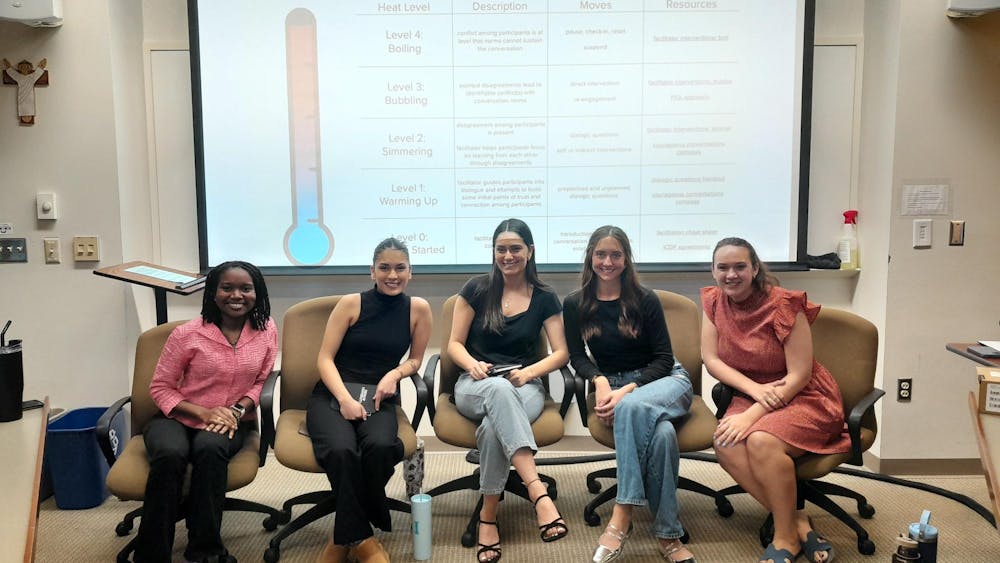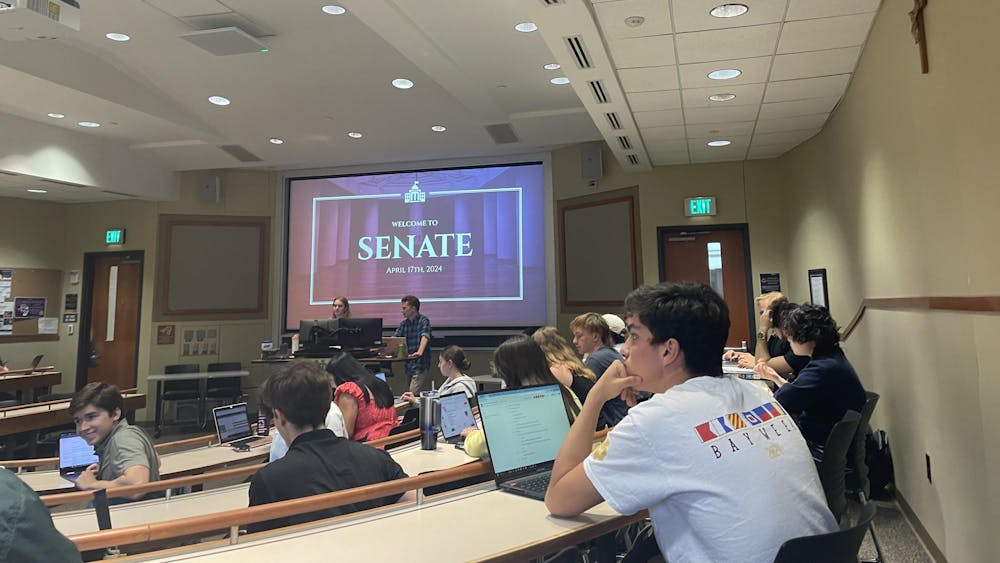How can we access Shakespeare in the digital age, more than 400 years after his time? This past Friday, Elliott Visconsi, associate professor of English, concurrent associate professor of law and the University's chief academic digital officer, presented a lecture entitled “Mobile Shakespeare” at the Hesburgh Library department of Rare Books and Special Collections that attempted to answer the question.
The lecture, which delved into the topic of using technology to better teach Shakespeare was part of the “Folio Fridays” lecture series, was presented in conjunction with the First Folio national exhibit, which will be at Notre Dame through the end of January. The First Folio is the first collected edition of Shakespeare’s plays, according to the Shakespeare at Notre Dame website, and is “one of the world’s most treasured books.”
“We have to confront the big questions that maybe students or new readers come to Shakespeare with, and that is: Why am I doing this? Why Shakespeare?” Visconsi said. “Shakespeare invites us, prompts us, to practice a method of reading that is a close reading in a literary world that is not our own.”
In order to help students tackle that close reading in a more productive way, Visconsi said he and his colleagues partnered with the publishing company Simon & Schuster, Inc. and the Folger Shakespeare Library to create Folger Luminary Shakespeare iPad Apps.
Visconsi said his foray into the digital world of Shakespeare began when he and his colleagues tackled the challenge of creating a digital version of Shakespeare’s “The Tempest” for iPads.
“We started in 2011 with ‘The Tempest.’ We wanted to make sure that we weren’t taking the play apart in pieces that are unrecognizable. We wanted to preserve the integrity of the play,” Visconsi said. “On the one hand, we think about the play as a whole, but we also wanted to focus on modeling the deep dives or close readings that students have to slow down over.”
After the success of the “The Tempest” for iPad, Visconsi said he and his colleagues created eight more apps, including ones for “Macbeth,” “Hamlet,” “Romeo and Juliet” and “A Midsummer Night’s Dream.”
According to Visconsi, there are numerous advantages to reading Shakespeare on this digital platform. Users of the application can read short commentaries from a multitude of Shakespearian scholars, which helps to deepen the users’ understanding of key textual moments within the play, he said. Users can also choose to listen to an audio version of the play while reading or view images that are relevant to certain parts of each play.
“Not only do we know that the text needs to be read, but also it’s preformed. So we designed a feature that would play a live audio performance word-for-word ... as you read, a live audio version plays,” Visconsi said. “Cognitive science proves that if you read and hear at the same time, you get better retention, better mastery and comprehension. It was a research-informed decision to have the audio and the text synched up and working simultaneously.”
The application does not include any video of the plays, Visconsi said.
“Video over-determines the interpretation [of the play], while audio does not. When listening to audio, there is still a lot of imaginative work that goes on,” Visconsi said. “Audio can really drive the cognitive experience.”
Visconsi said the purpose of the iPad application is to engage readers with Shakespeare and deepen their understanding of the plays.
“Everything we put in [the app], we designed it as an invitation. We tried to contextualize it as an invitation rather than a replacement,” Visconsi said. “It is an invitation to, for example, the discovery of ‘To be or not to be,’ so not the definitive account of it or an invitation to understanding that ‘This is a pencil sketch of a globe’ and there is enough context in the story that you are more likely to go and check it out. It is showing people what is interesting and possible in ways that they might not have exposure to otherwise.”













